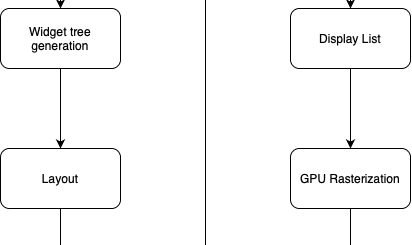What are Advanced Flutter optimization techniques?
Flutter provides various techniques and tools to optimize the performance of applications. We have created a list of some of these advanced Flutter optimization techniques which will help in creating a highly efficient & optimized application.
Advanced Flutter optimization techniques
There are some optimization techniques that can be used to improve the performance of your Flutter app:
Custom Shaders
Custom shaders create complex visual effects and animations that are impossible with standard widgets. They are GPU-accelerated and allow the developers to write custom algorithms that improve performance and reduce CPU usage. A shader is written in a dart-like language known as GLSL. You can read more at Flutter docs.
Hardware Acceleration
Hardware acceleration technique is used to speed up the rendering process and reduce CPU usage. It allows the Flutter application to leverage the GPU of the device to render graphics which reduces CPU usage and improves rendering speed.
Memoization
Memoization is a technique that allows developers to cache the results of expensive computations so it doesn’t have to be recalculated on reuse. This will be used for optimizing expensive widget builds and computation. There’s a great article on how to implement memoization in Dart and Flutter.
Offscreen rendering
Offscreen rendering is a technique that pre-renders parts of the application that are still not visible on the screen. This reduces the amount of computation required when the user scrolls or otherwise interact with the application.
Asynchronous Programming
The asynchronous Programming technique can be used to improve a Flutter app’s performance by introducing non-blocking calls in the application. Flutter provides various techniques for adding asynchronous programming in the application including Futures, Streams & async/await.
Memory management
Memory management can be one of the most important tools for highly optimized and performant apps. Flutter provides various tools such as Garbage Collector, which automatically frees up unused variables and objects. Dart DevTools memory profiler is another such tool that can be used to identify memory leaks or other performance-related issues.
Custom painting
Custom painting can be used to create custom visualization by drawing directly to the screen using the Flutter framework. This is particularly useful for optimizing the performance of complex animation or visualization.
Code splitting
Code splitting is a technique that optimizes the app performance by reducing the application into smaller chunks that are lazy loaded. This improves the startup time of the application and reduces the memory usage of the application.
Widget Reuse
Widget reuse is another technique to improve the app’s performance and reduce its memory utilization. Creating new widgets is an expensive process in terms of CPU and memory usage. There are various Flutter widgets that make use of widget reuse technique such as ListView & GridView widget which only renders the widgets that are visible on the screen.
Image Optimization
Images use a lot of memory in the application. Optimizing images can reduce the memory footprint of the app and improve its performance. Flutter provides tools for optimizing images such as ImageProvider class which can be used to load & cache images efficiently.
Correct data structures
Picking a correct data structure for development can have a big impact on the performance of the Flutter application. For example, using a HashSet instead of a list when we require a lot of lookups can provide significant performance improvements.
Platform-specific Code
Sometimes, using platform-specific code might be the most efficient way to improve application performance. Flutter provides platform channel API which allows applications to communicate between Dart code and native code such as Java, Kotlin, or Objective C.
Flutter provides various basic techniques to improve the performance of the application such as code and assets modification, lazy loading, widget reuse, etc. There are also some advanced Flutter optimization techniques such as hardware acceleration, custom shares, memoization, etc which can be used to improve the app performance to the next level. Read more advanced Flutter articles.











